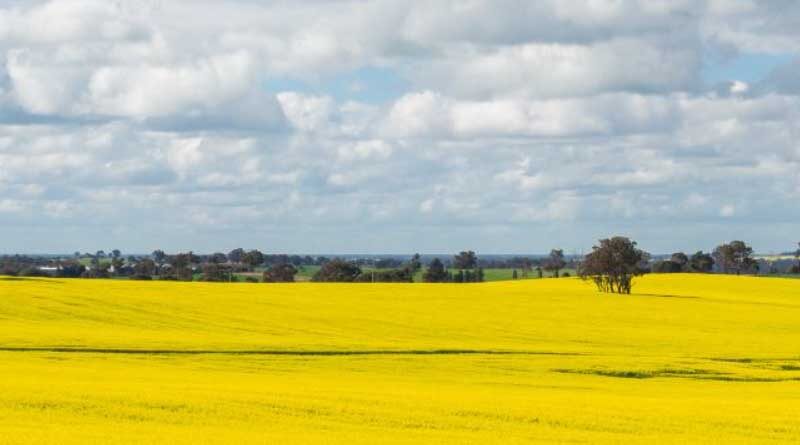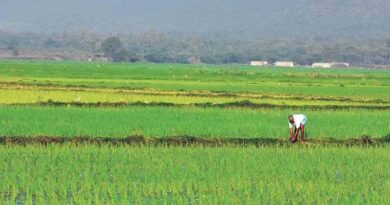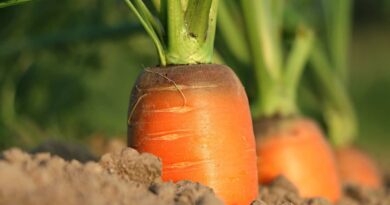COP26: Are Indian farmers aware of Climate Change challenges
Guest Author: Shashikant Trivedi, Senior Journalist
10 November 2021, New Delhi: A galaxy of political leaders assembled on 2nd November in Glasgow to discuss solution to the problem of mounting evidence that climate change will fall hardest on agriculture-dependent regions. Poverty and hunger are major potential challenges in the geographies that include South Asian and Sub-Saharan African region.
The meeting named as COP26 was another in the series in which various leaders have previously discussed many other ways to tackle the problem of greenhouse gases, carbon emission and their impact on agriculture.
As an immediate step a coalition of funders at the United Nations climate summit pledged $575 million to deliver climate-smart solutions to farmers in low-income countries via the CGIAR (The Consultative Group on International Agricultural Research).
The group was established in 1971. It has ‘donors’ from various strata that support 15 International Centers. They work in unison with hundreds of government and civil society organizations as well as private businesses around the world.
The COP26, earlier scheduled in 2020, was delayed due to COVID-19 pandemic. It was the first Conference since the Paris Agreement, took effect to provide a clear picture of how far the global community is falling short of its aims.
India’s Prime Minister, Narendra Modi, committed to five measures to fight climate change during the COP26 climate summit, including plans to ensure that half of the nation’s energy mix comes from sources other than fossil fuels by 2030.
However, India skipped signing the COP26 pledge to stop deforestation and cut methane gas emissions by 2030 because of its concerns over the impact on trade, on the country’s vast farm sector. Also it will have direct impact on the role of livestock in the rural economy.
Although many other leaders pledged to stop deforestation by the end of the decade and cut emissions of the potent greenhouse gas methane to help slow climate change. India has rightly chosen to skip signing COP26 pledge as benefits are less than if it had signed the pledge. Agriculture accounts for over 15% of India’s $2.7 trillion economy and employs almost half of the country’s more than 1.3 billion people.
Approximately 8 million people live in rural areas and India’s large livestock population plays pivotal role in the country’s agriculture and its rural economy. Though, forestry is not a bigger issue or challenge than that of reducing methane emissions; generated by cows’ digestive systems and manure reports quoting various insiders say, the country was troubled by a clause in the COP26 declaration that could limit trade.
Carbon dioxide is the archetypal greenhouse gas, its emission raises planet’s temperature. As a raw material of photosynthesis, this puts plants and associated photosynthetic organisms at the centre of any discussion of the causes and responses to climate change.
It is regarded that out industrial sector that emits CO2 into atmosphere by burning of oil, gas, and particularly coal over the last several hundred years as reversing the work done by plants during the carboniferous era (360 to 300 million years ago) to ‘lock up’ carbon underground. During that period, global average temperatures dropped from around 20 °C to 12 °C, and atmospheric CO2 dropped approximately eightfold.
This view of plants as carbon sinks can lead to an assumption that agriculture—especially the growing of crop plants—should be a reducer of greenhouse gas emissions, or at least ‘carbon-neutral’.
The true situation is not so simple. A recent research shows; the greenhouse gas emissions from food systems and found that they accounted for 18 gigatonnes of CO2 equivalents in 2015 (the most recent year in their analysis), and that most of this occurred before food left the farm.
That represents about a third of global greenhouse gas emissions. Much of this is related to land use changes, but there are other important contributions. Another research shows that agriculture for animal-based food emitted twice as much CO2 as for purely plant-based foods.
The authors also identified 0.7 gigatonnes of CO2 equivalents as arising from the production of inputs such as fertilizers.
Combined with the $256 million recently pledged at the Global Citizen Live event, and other commitments from Sweden and Belgium, CGIAR now has secured $863 million this year to confront a host of rapidly intensifying climate challenges that could upend the global fight against hunger and poverty.
Prime Minister Narendra Modi also met Mr Bill Gates on the side-lines of COP26 Summit. The Prime Minister expressed appreciation for the work being done by the Bill & Melinda Gates Foundation in India.
The effect of climate change on crops, fish and livestock is a key factor behind a steady rise in hunger, reportedly it is gradually eroding years of progress. However, the pattern of climate change threat is daunting in South Asian and Sub-Saharan region.
There are also apprehensions and fears that in absence of strategic and aggressive efforts to help farmers adapt, climate impacts on agriculture, many areas of these regions already suffering. It is evident in various data of high rates of poverty and malnutrition. This will make it impossible to achieve the Global Sustainable Development Goals (SDGs) pledging zero hunger and an end to extreme poverty by 2030.
There are many exciting innovations available. And COP26 has made a slew of announcements but still there is a wide gap between the magnitude of the climate change threat and smallholder farmers and the required investments.















